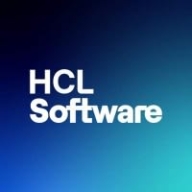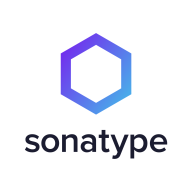

HCL AppScan and Sonatype Lifecycle are both prominent solutions in the application security and dependency management space. Sonatype Lifecycle appears to have the upper hand, especially in terms of features and integration capabilities.
Features: HCL AppScan provides robust security testing, customizable scanning configurations, and high adaptability for various security needs. Sonatype Lifecycle includes comprehensive dependency tracking, superior integration capabilities, and a proactive approach to identifying vulnerabilities in open-source components.
Room for Improvement: HCL AppScan could enhance reporting capabilities, improve integration with other software tools, and focus on better user experience. Sonatype Lifecycle needs a streamlined update process, performance optimization, and further efficiency in deployment procedures.
Ease of Deployment and Customer Service: HCL AppScan is known for a straightforward deployment process and reliable support, favoring quick rollouts. Sonatype Lifecycle, though with a steeper learning curve during deployment, provides extensive documentation and beneficial customer service, which users find helpful.
Pricing and ROI: HCL AppScan is praised for its competitive pricing model, offering substantial value, yet some concerns exist about the efficiency of its ROI. Sonatype Lifecycle's higher initial costs are balanced by better ROI over time due to extensive monitoring and risk-reduction features, making it a justified investment for many organizations.
We have seen cost savings and efficiency improvements as we now know what happens in what was previously a black box.
Veracode provides excellent assistance and regularly scheduled calls to address customer concerns and updates.
They are helpful when we raise any tickets.
JFrog is easier to configure for high availability as it does not require extra components.
Sonatype Lifecycle is very stable, especially in the binary repository management use case for managing binary artifacts.
We also noticed a lack of detailed information for configuring Sonatype Lifecycle for high availability and data recovery.
Companies often choose based on budget constraints, with Veracode being on the higher end cost-wise.
For larger numbers like our case with 1,000 user licenses, JFrog becomes much more cost-effective, roughly ten times cheaper than Sonatype.
AppScan's most valuable features include its ability to identify vulnerabilities accurately, provide detailed remediation steps, and the newly introduced AI-powered features that enhance its functionality further.
The integration into our CICD pipeline enables us to continuously monitor code changes and identify new vulnerabilities.
The most valuable feature for us is Sonatype Lifecycle's capability in identifying vulnerabilities.


IBM Security AppScan enhances web application security and mobile application security, improves application security program management and strengthens regulatory compliance. By scanning your web and mobile applications prior to deployment, AppScan enables you to identify security vulnerabilities and generate reports and fix recommendations.
Sonatype Lifecycle is an open-source security and dependency management software that uses only one tool to automatically find open-source vulnerabilities at every stage of the System Development Life Cycle (SDLC). Users can now minimize security vulnerabilities, permitting organizations to enhance development workflow. Sonatype Lifecycle gives the user complete control over their software supply chain, allowing them to regain wasted time fighting risks in the SDLC. In addition, this software unifies the ability to define rules, actions, and policies that work best for your organizations and teams.
Sonatype Lifecycle allows users to help their teams discover threats before an attack has the chance to take place by examining a database of known vulnerabilities. With continuous monitoring at every stage of the development life cycle, Sonatype Lifecycle enables teams to build secure software. The solution allows users to utilize a complete automated solution within their existing workflows. Once a potential threat is identified, the solution’s policies will automatically rectify it.
Benefits of Open-source Security Monitoring
As cybersecurity attacks are on the rise, organizations are at constant risk for data breaches. Managing your software supply chain gets trickier as your organization grows, leaving many vulnerabilities exposed. With easily accessible source code that can be modified and shared freely, open-source monitoring gives users complete transparency. A community of professionals can inspect open-source code to ensure fewer bugs, and any open-source dependency vulnerability will be detected and fixed rapidly. Users can use open-source security monitoring to avoid attacks through automatic detection of potential threats and rectification immediately and automatically.
Reviews from Real Users
Sonatype Lifecycle software receives high praise from users for many reasons. Among them are the abilities to identify and rectify vulnerabilities at every stage of the SDLC, help with open-source governance, and minimize risk.
Michael E., senior enterprise architect at MIB Group, says "Some of the more profound features include the REST APIs. We tend to make use of those a lot. They also have a plugin for our CI/CD.”
R.S., senior architect at a insurance company, notes “Specifically features that have been good include:
• the email notifications
• the API, which has been good to work with for reporting, because we have some downstream reporting requirements
• that it's been really user-friendly to work with.”
"Its engine itself is most valuable in terms of the way it calculates and decides whether a security vulnerability exists or not. That's the most important thing. Its security is also pretty good, and its listing about the severities is also good," says Subham S., engineering tools and platform manager at BT - British Telecom.
We monitor all Application Security Tools reviews to prevent fraudulent reviews and keep review quality high. We do not post reviews by company employees or direct competitors. We validate each review for authenticity via cross-reference with LinkedIn, and personal follow-up with the reviewer when necessary.